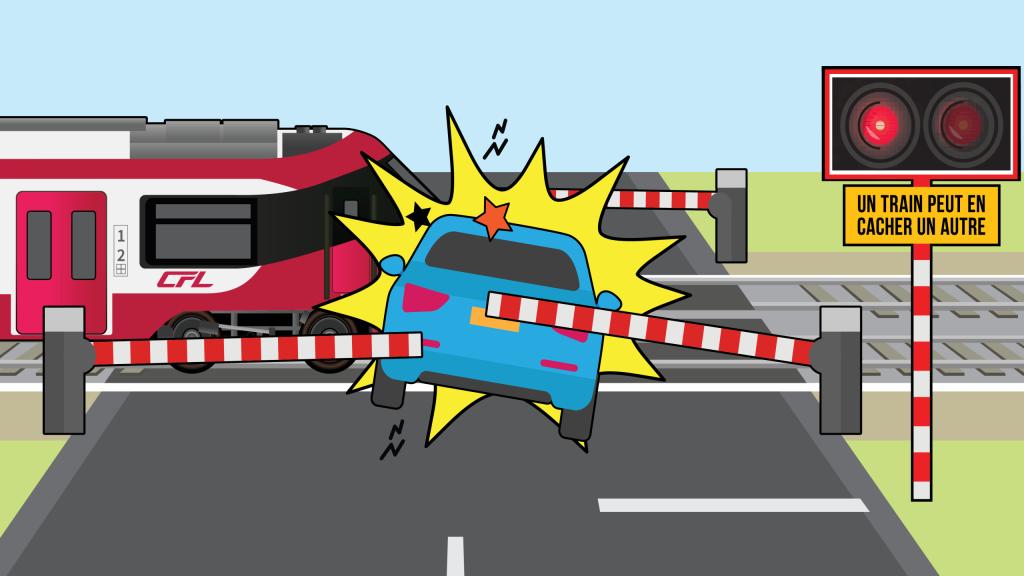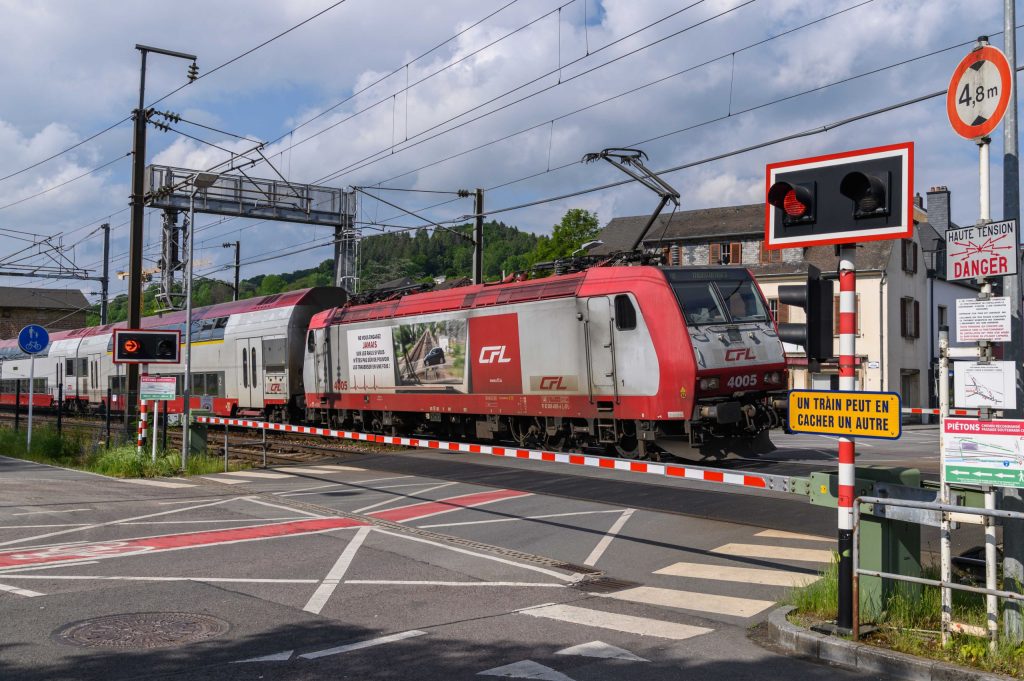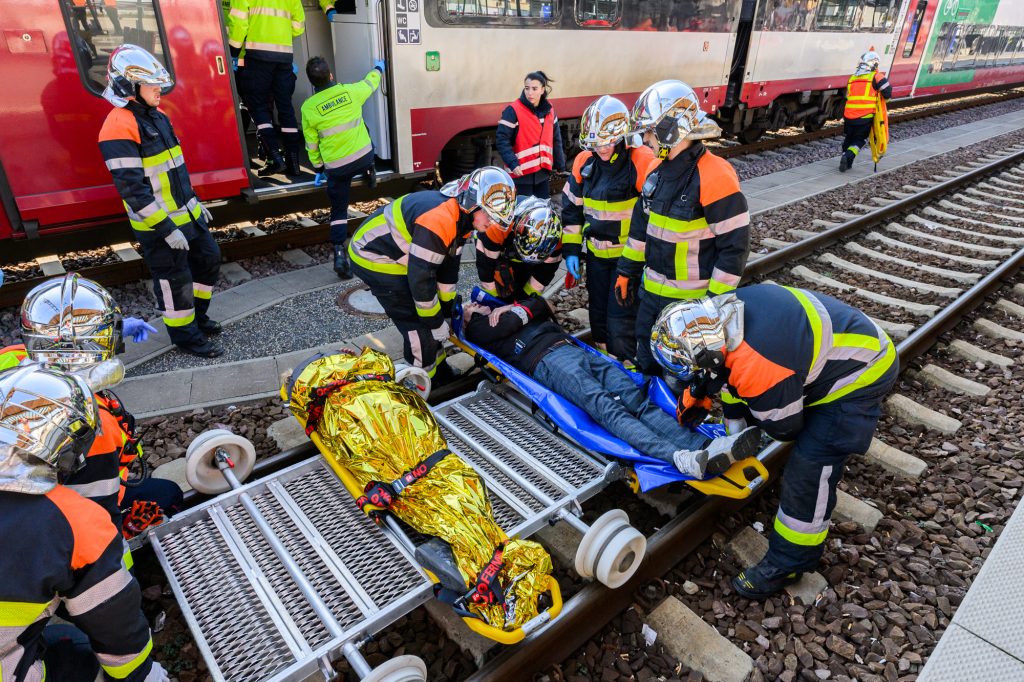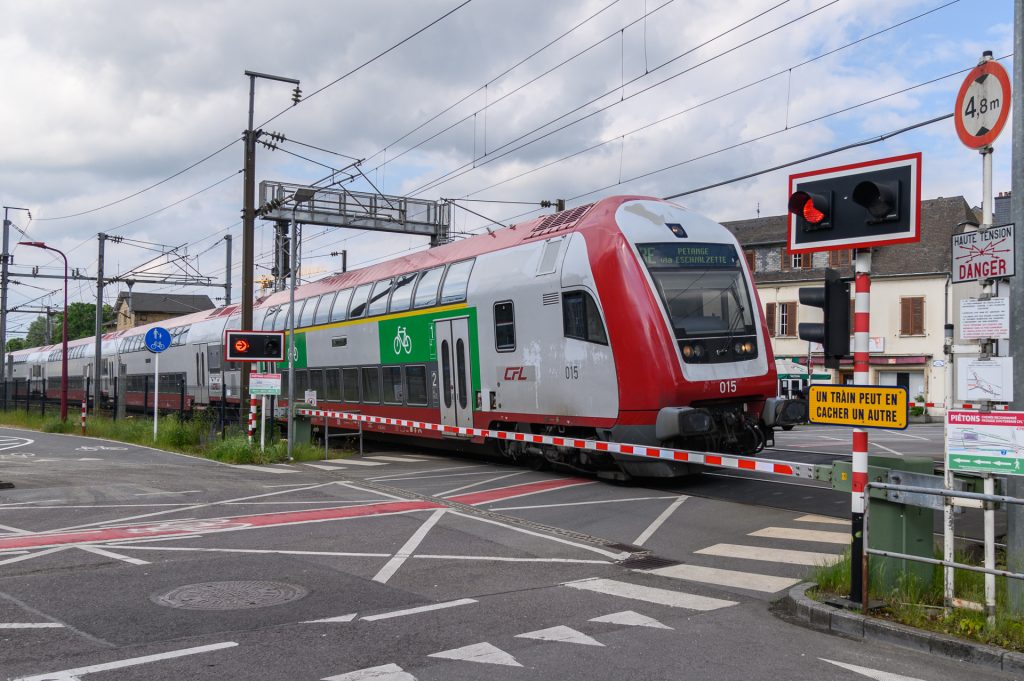
SOS: a signal taken (very) seriously by CFL
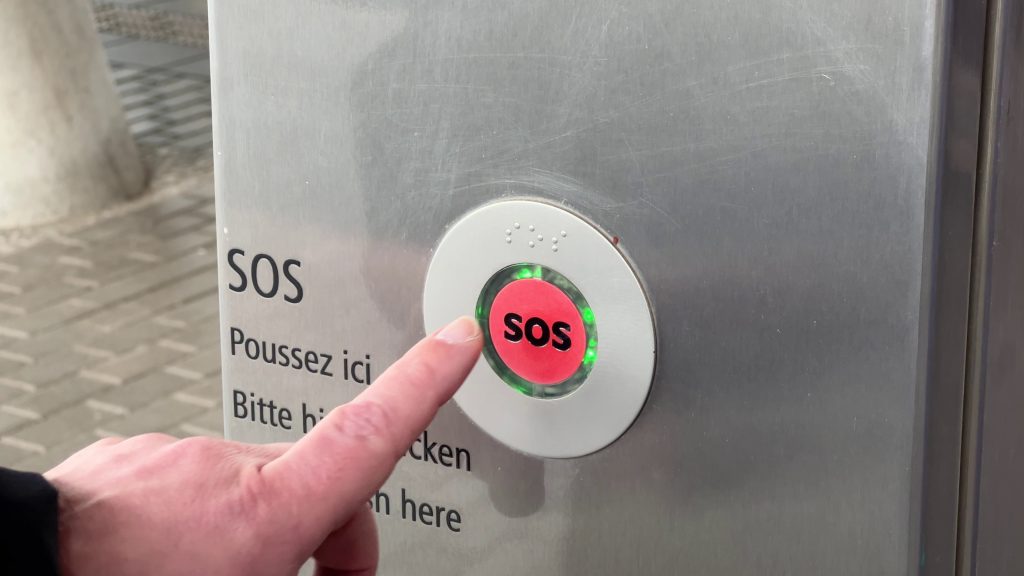
On the platforms of stations and railway stops across the country, SOS booths are proving extremely useful for customers who are in difficulty or have noticed an incident. At the other end of the line, the CFL staff are dedicated to ensuring that the call is resolved as quickly as possible. As long as the call centre is put to good use…
7/7d, 24/24h. As an absolute priority for the CFL, the safety of staff and customers is covered by a whole series of procedures, facilities and other tools made available to passengers.
Recognisable by their totemic shape, their red head and the three letters “SOS” on them, SOS booths can be found on the platforms of 15 stations and railway stops across the country. They are the CFL’s first line of support for customers in distress or who witness a situation requiring the intervention of CFL staff or the emergency rescue services.

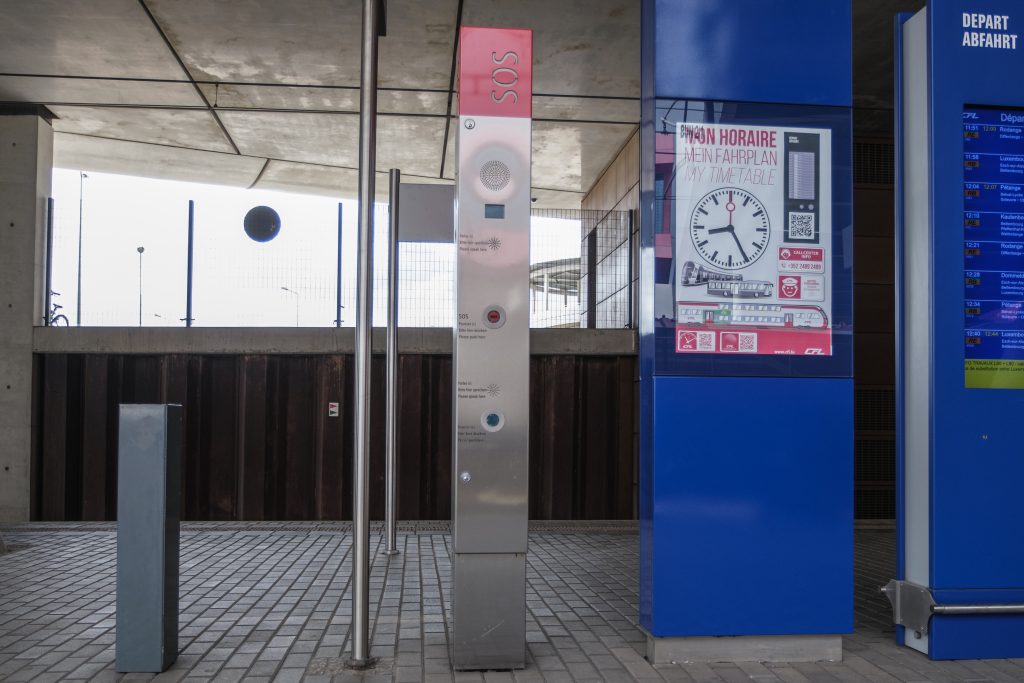
On the other side of the line, the BMS (Building Management System) staff are there to listen. And then even more. “When a call is made from an SOS booths, a specific bell sounds and the call is prioritised on our control screens, which allows us to make a visual assessment while providing the first response elements”, explains Mariana Theis, Remote Monitoring Agent at the BMS since 2019 and contributor to the latest podcast dedicated to CFL behind the scenes.
“The origin of the call is also indicated on our control screen, so we can contact the most appropriate person as quickly as possible, depending on the location and the gravity of the incident. The CFL supervisors present in the main stations, the external company in charge of security in the stations and on the trains, as well as the CGDIS or the Police, are all key contacts”, adds Mariana.
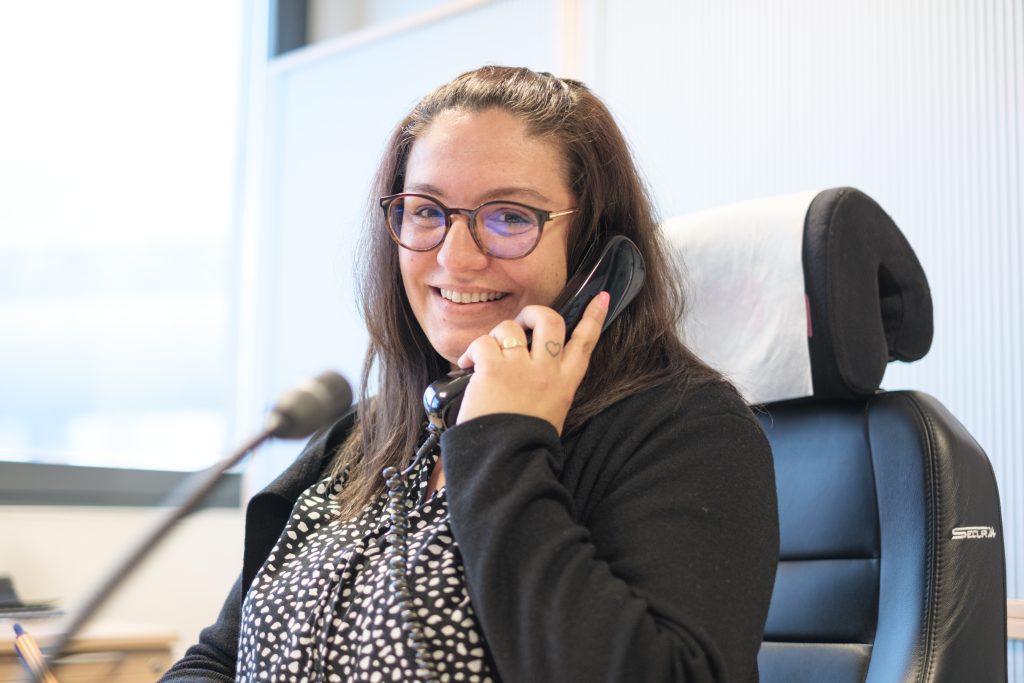


The surveillance camera images are stored for 20 days on servers in Luxembourg and are used by authorised CFL staff to respond to requests from the authorities.
Passionate about her work and a generous person, Mariana admits that she is disappointed by some of the misuse of the SOS booths. Although they remain in the minority, hoaxes and other false calls nonetheless needlessly clutter up a line that can save a life.
“An SOS booth is appropriately named, as its purpose is to save lives, if need be, and it cannot be used to obtain information on a train’s timetable, as it is not the role of BMS staff to provide this type of information to passengers”, explains Loïc Gandolfi, National BMS Manager at CFL. “The terminals are equipped with two buttons (at different heights), one of which can be accessed by a person with reduced mobility or in a wheelchair. Unfortunately, children sometimes confuse it with a game…”.
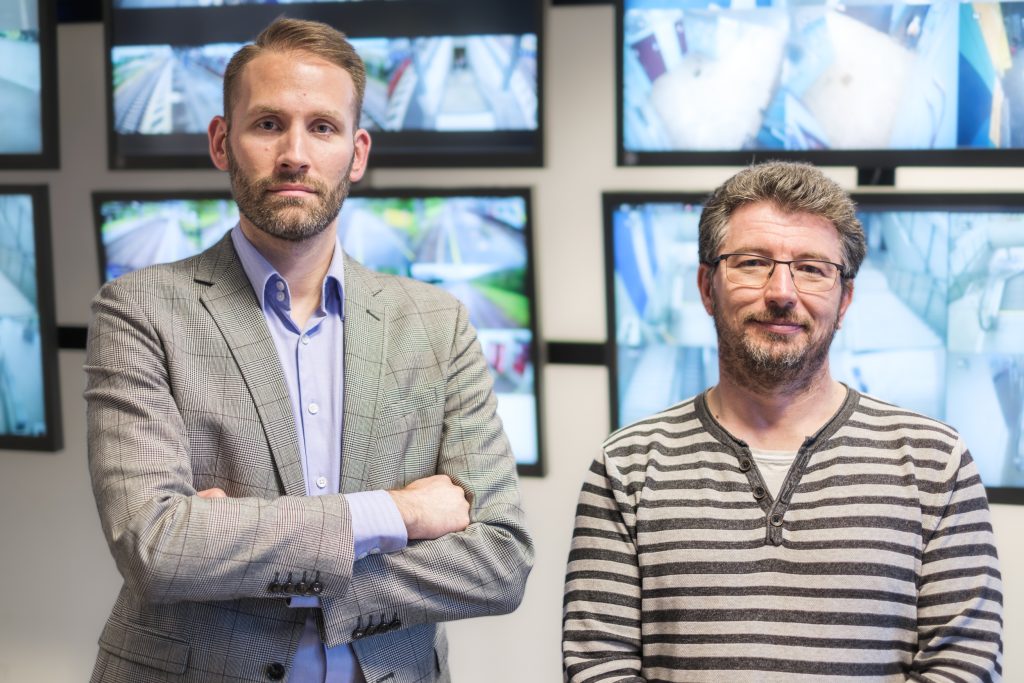
A centre of expertise at BMS
As well as managing calls from SOS terminals, the staff at the CFL’s BMS centres also manage alarms from hundreds of sensors (fire, intrusion) installed on various railway infrastructures, as well as calls from lifts located in stations and stops.
Since 2011, the CFL has had a BMS centre at Belval-Université and are gradually building a nationwide network around a central building in Luxembourg, with satellites at Mersch, Rodange (both already operational) and Wasserbillig (under construction). Connected to the new-generation computer network, in which various devices (including monitoring devices) are linked, the BMS centres will act as relays on a national level.
With their BMS, the CFL are using innovation to maintain the quality of service to customers. Instant detection of a fault means that the appropriate department or external company can intervene quickly to minimise any impact on customers.
“At the same time as deploying new devices supervised by the BMS, including SOS booths and cameras, we are continuing to recruit additional staff for our control centres, as the National BMS has become a centre of expertise for remote monitoring and coordination in the event of an emergency,” adds Loïc Gandolfi.
Currently, around twenty people look after the various BMS centres. Dedicated staff who often represent a reassuring contact in situations where launching an SOS is no longer an option.

